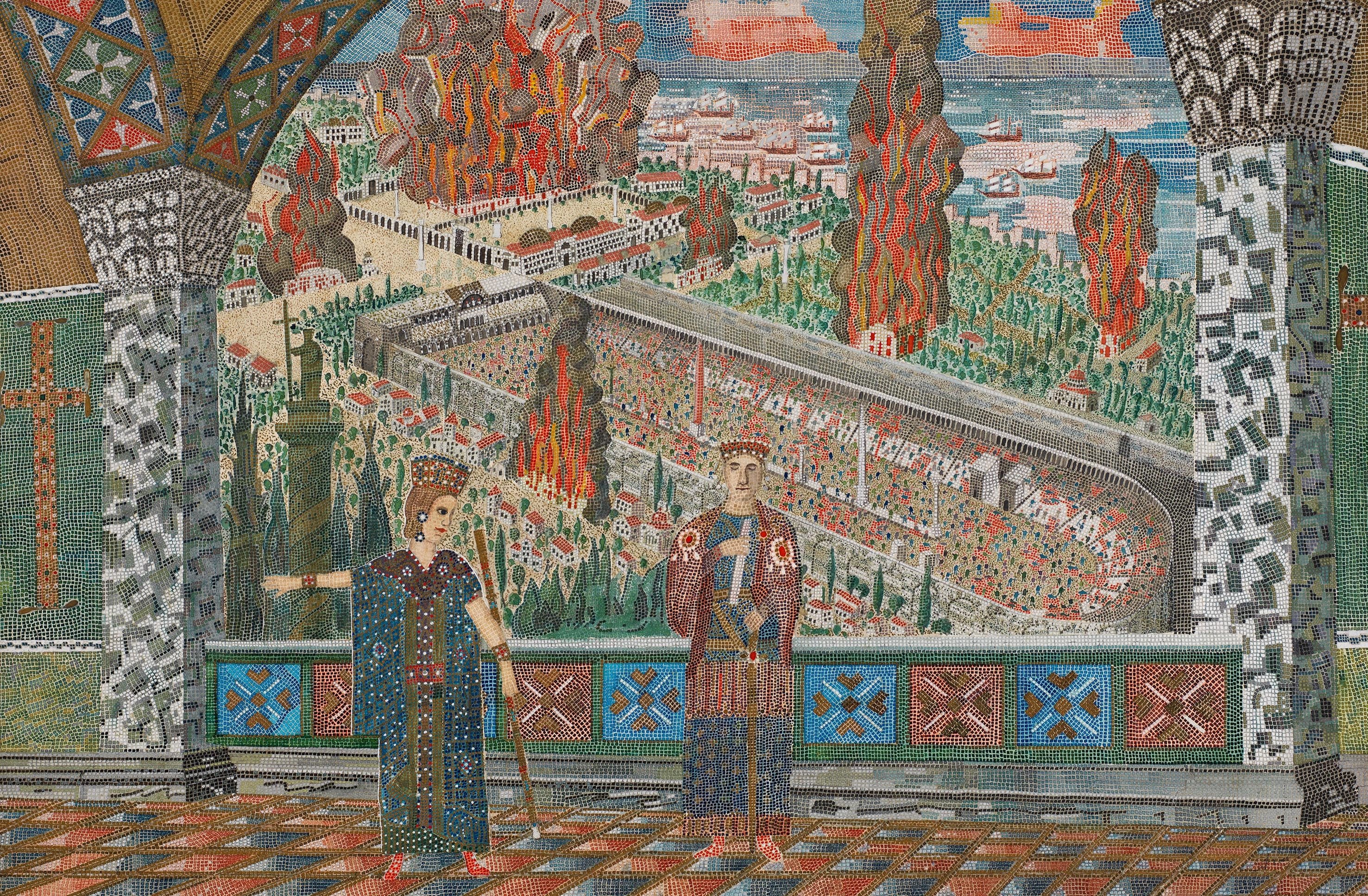© Turkuvaz Haberleşme ve Yayıncılık 2024
A new exhibition jointly organized by Pera Museum and Istanbul Research Institute examines the central role of Istanbul in creating a new international and local awareness of Byzantine heritage. “From Istanbul to Byzantium: Paths to Rediscovery, 1800–1955,” which brings together a rich archaeological and archival selection, will remain open at Pera Museum until March 6, 2022.
The exhibition sheds light on the development of Byzantine studies in Istanbul focussing on Byzantine artifacts in the Istanbul Archaeological Museums. Curated by Byzantinist Brigitte Pitarakis, it scrutinizes an area that has not been studied enough until now and offers an impressive selection of archives. Many important libraries, archives and private collections from Turkey and the world contributed to this selection along with Istanbul Archaeological Museums.
Rare books, prints and maps, original archive photographs, documents and pictures illustrated in a flamboyant style specific to the period were brought together in thematic integrity in the exhibition. While Byzantium-inspired paintings by Nejad Melih Devrim and Fikret Mualla reveal the influence of this heritage on modern art, A. Tayfun Öner's 3D animation, which deals with the extraordinary career of Istanbul born astronomer Eugène Antoniadi, looks at Byzantium through the lens of science fiction.
In the 19th and early 20th centuries, the fact that geopolitical, diplomatic, academic, artistic and local interests intersected in Istanbul increased the awareness of the Byzantine past as a rich and shared heritage. By taking steps to break the simplified orientalist view of Istanbul, archaeological finds started to be reconsidered with a rational approach. Those who try to document Istanbul's Byzantine past not only guide the preservation of the city's cultural heritage but also develop scientific research methods. These developments, which brought a scientific approach to Byzantine Empire, are revealed in the exhibition” From Istanbul to Byzantium.”
Noting that the transformation of the Byzantine heritage into a wide area of interest was being examined for the first time in an exhibition, curator Pitarakis writes: “Istanbul’s major role in modern transnational transport began to be established in the late 19th century with the construction of the Berlin-Baghdad railway and the opening of the Suez Canal, when the broadening of geographical horizons and developments in scientific research and technologies gave rise to a renewed curiosity about past civilizations and people who today would be called the other.
"Beyond looking at various moments in the city’s life from 1800 to 1955, the exhibition ‘From Istanbul to Byzantium’ considers the dynamic of Istanbul as a center of gravity attracting the monetary and intellectual wealth of empires to further knowledge of the Byzantine Empire, ultimately resulting in the emergence of Byzantine studies as a discipline. It sheds light on the complex issue of Byzantine heritage in modern history by presenting the perspectives of the political, economic, and cultural actors in Istanbul during the period covered.”
Changing meanings of Byzantine heritage
The first section of the six-part exhibition provides the background needed to understand Istanbul's multicultural identity, cultural and intellectual vitality, and the dynamics that led to the development of Byzantine studies in the West. The second section presents research on Byzantine topography, architecture, inscriptions and artifacts, while the third section examines the central role of the Müze-i Hümayun (today’s Istanbul Archaeological Museums) in reinforcing the modern state image of the late Ottoman Empire.
The fourth section greets the visitors with Byzantine ruins that emerged in lands that were emptied with the diminishing of Istanbul’s wooden houses due to modernization of the city, earthquakes and fires. In the fifth section, there are detailed maps prepared by professionals from different disciplines such as architects, photographers, cartographers and painters to record the Byzantine ruins, structure and topography. The last section of the exhibition illustrates the artistic impact of the curiosity generated by the rediscovery of Byzantium in Istanbul.

The exhibition can be visited at Pera Museum from Tuesday to Saturday between 10 a.m. and 7 p.m., and between 12 p.m. and 6 p.m. on Sundays. On Fridays, within the scope of “Long Friday,” all visitors can visit the museum for free of charge between 6 p.m. and 10. p.m. while students can visit it for free of charge on Wednesdays, within the scope of “Young Wednesday.”
